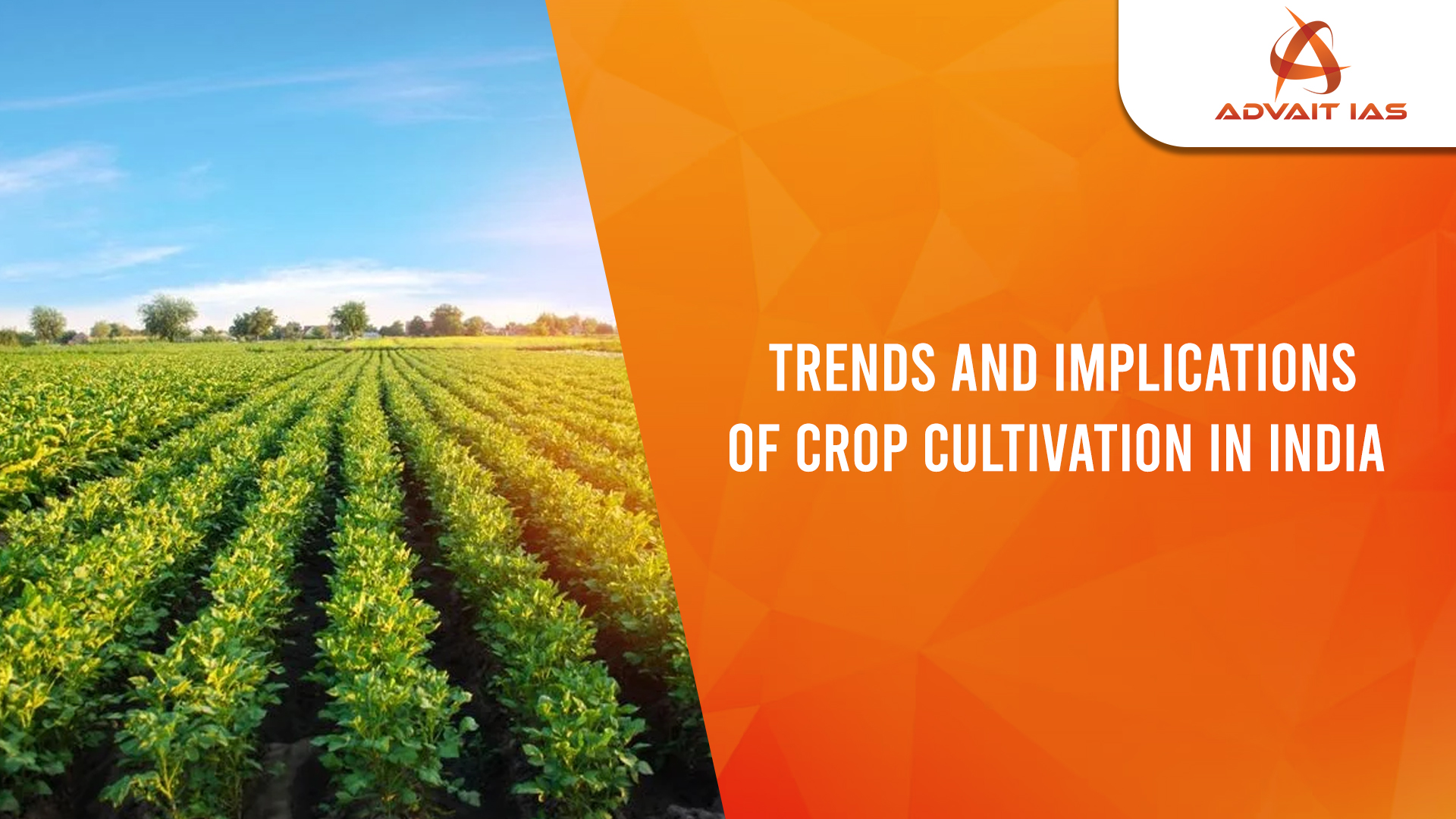Agricultural trends show rising acreage of rice and wheat, backed by government support, improved yields, and policy incentives.
- Other crops like cotton, soybean, and pulses show fluctuating or declining cultivation due to price instability and lower returns.
Trends in Crop Cultivation in India
Increased Cultivation
- Rice:
- Punjab: ↑ from 8 lh (lakh hectares) (2015–16) to 32.4 lh (2024–25)
- Telangana: ↑ from 5 lh to 47 lh
- Wheat:
- Madhya Pradesh: ↑ from 1 lh to 78.1 lh
Declining Cultivation
- Cotton:
- Punjab: ↓ from 4 lh to 1 lh
- Telangana: ↓ from 6 lh (2020–21) to 18.1 lh
- Chickpea (Chana):
- Madhya Pradesh: ↓ from 2 lh to 20.1 lh
- Soybean:
- MP: ↓ from 1 lh (2015–16) to 57.8 lh (2024–25); peaked at 66.7 lh in 2020–21
Why Rice and Wheat Dominate?
- MSP & Procurement Assurance: Reliable government procurement ensures income stability.
- Irrigation Support: Access to canal/groundwater reduces yield risk.
- Genetic Advancements:
- Rice:
- Kamala: CRISPR-edited Samba Mahsuri with 2× grain output, faster maturity, and water efficiency.
- Pusa DST Rice 1: Edited DST gene to improve heat, salt, and drought tolerance.
- Wheat:
- Kalyan Sona & Sonalika: Green Revolution varieties that boosted yield and resilience.
- Rice:
- Market & Demand:
- Staple food in PDS, Mid-Day Meals, welfare schemes ensures steady demand.
- Policy & Infrastructure Bias:
- Better mandis, storage, and subsidies for cereals.
- Schemes like PM-KISAN and fertilizer subsidies favor rice/wheat.
Implications of Overdependence on Rice-Wheat System
Nutritional & Environmental Issues
- Low dietary diversity: Carbohydrate-heavy, lacks proteins/micronutrients.
- Soil degradation: Overuse of water and fertilizers causing salinity.
- Salinity-prone areas may rise to 11 million ha by 2030.
Water Stress
- Rice’s high water demand depletes groundwater.
- Over-extraction rates: Punjab (66%), Rajasthan (51%), Haryana (34%)
Market & Ecological Risks
- Market distortion due to MSP-induced monoculture.
- Import dependency: 60% of edible oil
- Regional imbalances: Irrigated NW India gains more, rainfed/tribal areas lag.
- Monoculture vulnerability: Threat of diseases (e.g., Wheat Blast caused by Magnaporthe oryzae Triticum).
India’s Crop Diversification Initiatives
- Rashtriya Krishi Vikas Yojana (RKVY)
- Mission for Integrated Development of Horticulture (MIDH)
- Mission for Cotton Productivity
- Mission for Self-reliance in Pulses
- National Mission on High Yielding Seeds
Recommended Measures for Agricultural Diversification
1. Policy & Institutional Reforms
- Expand MSP to include millets, pulses, oilseeds.
- Implement Price Deficiency Payment Scheme (PDPS).
- Strengthen FPOs and local mandis for non-cereal crops.
2. Promote Climate-Resilient Crops
- Support millets via National Millet Mission.
- Boost pulses, oilseeds, horticulture
3. Strengthen Market Access
- Expand e-NAM, promote contract farming, and agri-startups.
- Support exports of high-value crops (e.g., spices, organic products).
4. Infrastructure & Technology
- Invest in cold chains, warehouses, food processing under PM Kisan SAMPADA Yojana.
5. Financial Support & Modern Techniques
- Expand PMFBY to cover diverse crops.
- Lower interest rate loans for non-cereal cultivation.
- Train farmers via Skill India, promote Kisan Drones.
6. Region-Specific Strategies
- Punjab-Haryana: Shift to cotton, maize, agroforestry.
- Eastern India: Promote flood-resistant rice, aquaculture.
- Rainfed Areas: Focus on millets, pulses, dryland farming.
Over-reliance on rice and wheat is causing nutritional, environmental, and economic distortions. Diversification through targeted policy reform, climate-smart agriculture, and market infrastructure is essential for long-term agricultural sustainability, food security, and farmer prosperity.






